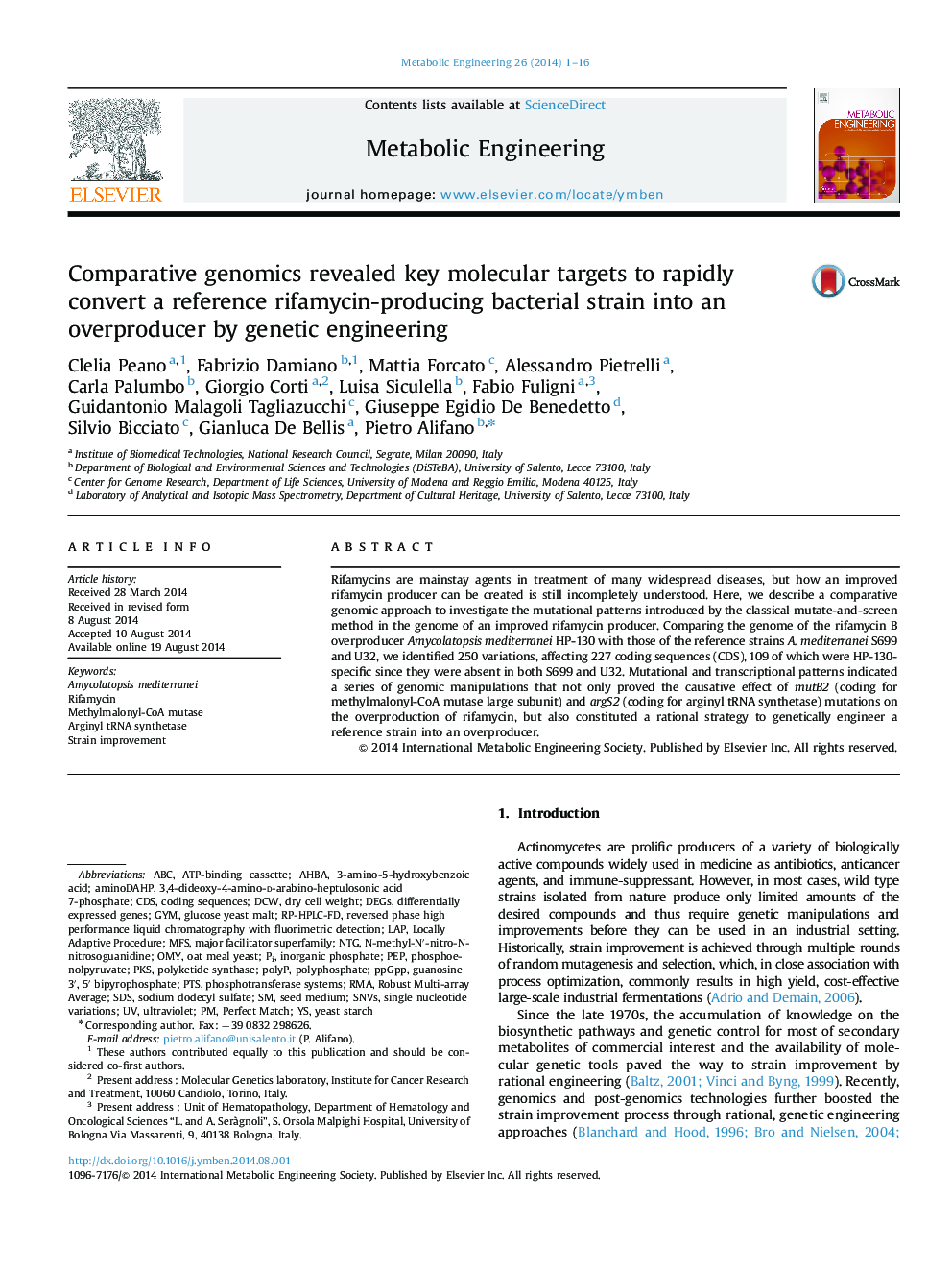| Article ID | Journal | Published Year | Pages | File Type |
|---|---|---|---|---|
| 6494521 | Metabolic Engineering | 2014 | 16 Pages |
Abstract
Rifamycins are mainstay agents in treatment of many widespread diseases, but how an improved rifamycin producer can be created is still incompletely understood. Here, we describe a comparative genomic approach to investigate the mutational patterns introduced by the classical mutate-and-screen method in the genome of an improved rifamycin producer. Comparing the genome of the rifamycin B overproducer Amycolatopsis mediterranei HP-130 with those of the reference strains A. mediterranei S699 and U32, we identified 250 variations, affecting 227 coding sequences (CDS), 109 of which were HP-130-specific since they were absent in both S699 and U32. Mutational and transcriptional patterns indicated a series of genomic manipulations that not only proved the causative effect of mutB2 (coding for methylmalonyl-CoA mutase large subunit) and argS2 (coding for arginyl tRNA synthetase) mutations on the overproduction of rifamycin, but also constituted a rational strategy to genetically engineer a reference strain into an overproducer.
Keywords
ABCPTSLAPPKSMFSPEPDEGsSNVsNTGRMAMethylmalonyl-CoA mutaseAmycolatopsis mediterraneippGppOmyDCWAHBASDSN-methyl-N′-nitro-N-nitrosoguanidineUltravioletMajor facilitator superfamilyStrain improvementPerfect Matchcoding sequencesRifamycinGYMsodium dodecyl sulfatePolyketide synthaseinorganic phosphatephosphoenolpyruvateRobust multi-array averagedry cell weightPolyphosphatePolypDifferentially expressed genesCdSATP-binding cassette
Related Topics
Physical Sciences and Engineering
Chemical Engineering
Bioengineering
Authors
Clelia Peano, Fabrizio Damiano, Mattia Forcato, Alessandro Pietrelli, Carla Palumbo, Giorgio Corti, Luisa Siculella, Fabio Fuligni, Guidantonio Malagoli Tagliazucchi, Giuseppe Egidio De Benedetto, Silvio Bicciato, Gianluca De Bellis, Pietro Alifano,
